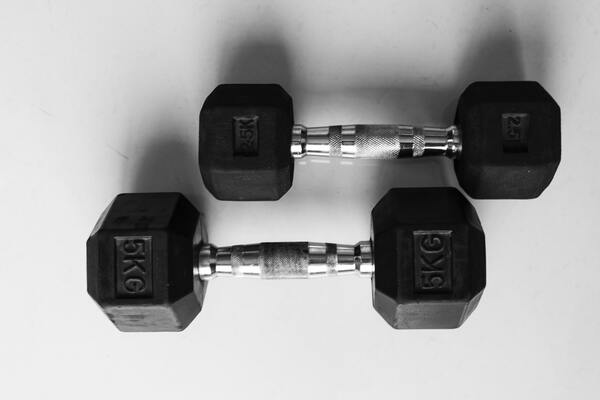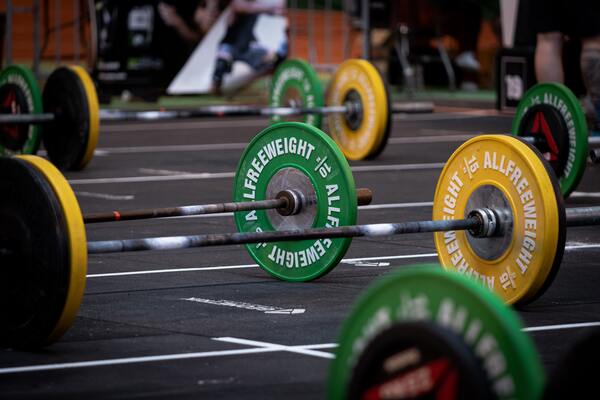Developing a strong upper body is something that everyone should aspire to do. The back muscles are one significant body part that significantly contributes to upper body strength.
It has long been understood that bent-over rows are one of the best exercises for boosting back strength. Which exercise is the most beneficial? Which one do you prefer, dumbbell row or barbell row? Decide which one is more beneficial to you after reading it.
Barbell Row
A compound exercise called the barbell row uses heavier weight to overload your entire back. A barbell is rowed toward the chest while stooping over and being held in both hands.
Before going heavy, start with light weight and concentrate on your form to lessen the chance of injury. Standing with your feet shoulder-width apart, squat, and crouch. Straighten your back and maintain an upright chest.
To support your core and prevent back rounding, you can wear a belt. You should carefully squeeze your elbows against your body and back until the bar touches your sternum.
In order to fully stretch the back muscles, slowly lower the bar back down until your arms are fully extended. You can gradually start adding on more weight once you’ve mastered this with a lighter weight.
Benefits of Barbell Row:
- allows you to put more weight on your back muscles.
- Your lower body can provide stability and support.
Dumbbell Row
You can work one side of your back at a time with the dumbbell row, which is a safer substitute for the barbell row. By concentrating on just one side, you may be able to improve your mind-muscle connection.
Additionally, it aids in strengthening the weaker side of your back. If one side is weaker, you’ll notice it. In the barbell row, the stronger side can often take over the movement and do most of the work.
Your weaker side is being made to exert the same amount of effort in this situation.
Benefits of Dumbbell Row:
- More so than a bilateral row, it works your core.
- One side of the body can be isolated, allowing for more focused stimulation of a specific muscle.

Similarities Between Barbell And Dumbbell Rows
Naturally, there are more similarities than differences between dumbbell and barbell rows. By adding more context, identifying the areas where they overlap can actually help one understand the differences.
Multi-joint
Despite their differences, barbell and dumbbell rows target the same muscles and are very similar exercises. The latissimus dorsi, the largest back muscle, as well as the rhomboids and trapezius, which are smaller back muscles, are both the focus of both exercises. Additionally, both exercises partially contract the biceps.
Hip Hinge
Both exercises involve pulling and rowing motions that call for straight backs and hip flexion. Instead of looking up, look down at the ground to make sure your neck is not being overworked.
Back Programming
Because of how similar the two movements are, they can be used in almost any program that calls for a dependable pulling movement. A routine aimed at developing a powerful ripped back can include both rows as main exercises.
Differences Between Barbell And Dumbbell Rows
Strength
Both the barbell and dumbbell row can increase strength, but the barbell row generally allows for higher loads to be rowed at once, making it better for overall strength growth.
Hypertrophy
The dumbbell version is better suited to hypertrophy training, where a strong mind-muscle connection is crucial to growth, due to the relatively lighter loading. However, if you have access to the right equipment, you can certainly go heavy on a set of dumbbell rows.
Muscular Imbalances And Asymmetries
The dumbbell row is more effective for this because unilateral training can address muscular imbalances and correct asymmetries that might exist between the left and right sides of the body.
Barbell training frequently falls short in this regard because the body may make up for any weakness or movement imbalances.
When To Use
Knowing the differences between a barbell and dumbbell row – beyond the obvious – is all well and good, but the important part is knowing when one is better than the other for your needs.
For Strength
We advise choosing the barbell row if your goal is to lift as much weight as you can in order to be as strong as you can. You can load the most weight and work both sides of your body with the barbell row, making you stronger than with the dumbbell row overall.
For Muscle Growth
Since you can perform a lot of volume with both the barbell and dumbbell rows, it is best to perform both for a big back. Simply check to see if each movement is being done with enough volume.
For Sports Performance
A lifter should be extremely familiar with the barbell when it comes to sports like weightlifting and powerlifting. Movements like bent-over and Pendlay barbell rows translate well to deadlifts and cleans.
On the other hand, performance might be hampered if imbalances and pulling mechanics are not corrected. Strength and power athletes can thus benefit from both barbell and dumbbell rows.
The dumbbell row might be your best option because of the unilateral component if you play a sport that necessitates strong core stability, which the majority of sports do.
For Rehab
The dumbbell row is probably a better option if you need to correct a muscular imbalance, make room for a sore shoulder or elbow, or make any training-related adjustments.
You can make sure you hold onto your hard-earned muscle while also taking care of any necessary physiological issues by being able to isolate one side of the body while still performing a powerful compound lift.
Conclusion
Both exercises have a place in your exercise routine, and neither one should be overlooked.
Given the substantial amount of weight you can lift during a barbell row, it’s ideal for promoting muscle growth. However, the single-arm dumbbell row is excellent at correcting any imbalances that may arise when using a barbell for exercise.
Whether you’re a beginner or an experienced gym goer, if you can incorporate both the barbell and dumbbell row into your workout, you’ll build some serious upper body strength.
